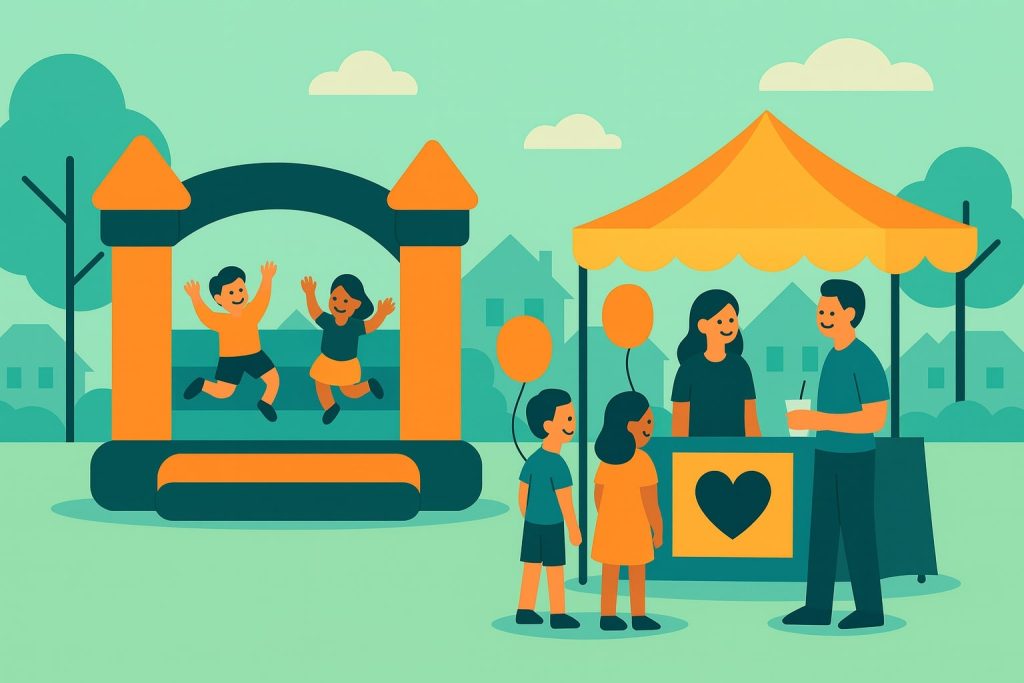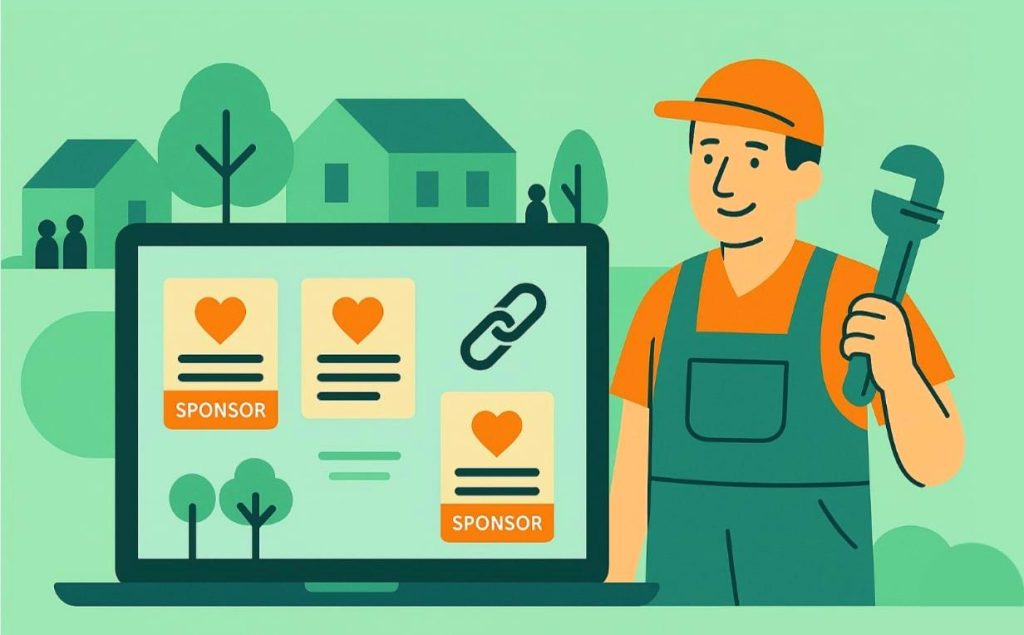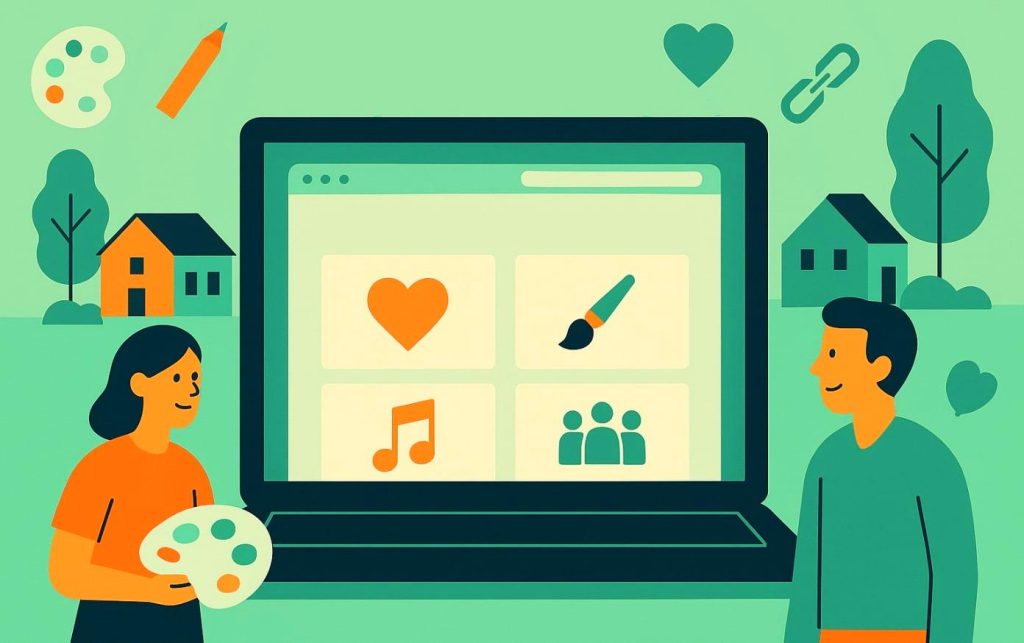The Internet is crazy about them, sociologists are trying to understand them, marketers want learn how to sell to them. Millennials have become a full time occupation for brands and marketers. But in the US, being the marvelous melting pot that it is, segments within millennials can differ by culture, habits, education, vision of themselves and the world. The largest group within the non-white millennials are the Hispanic millennials.
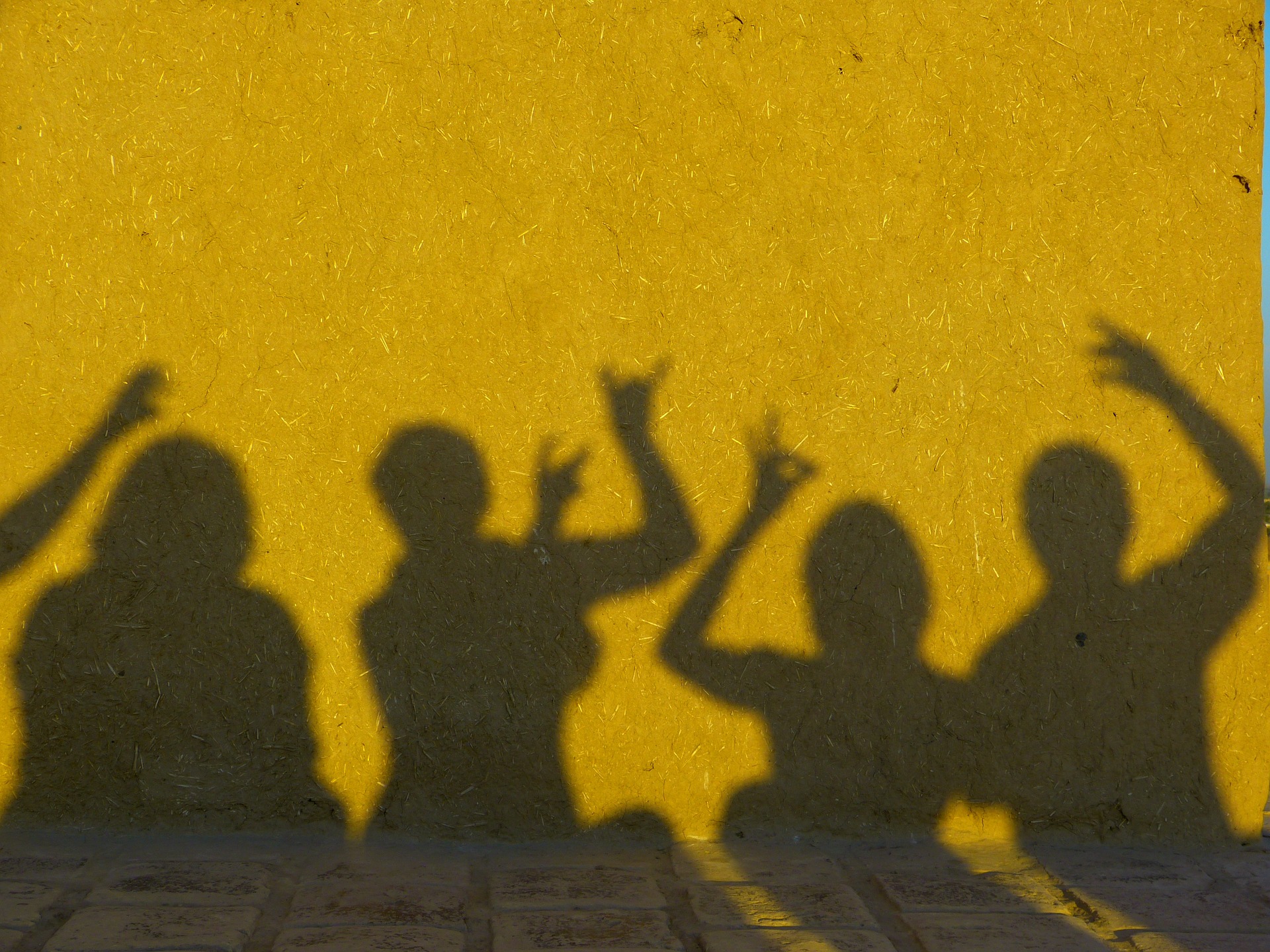
At ZipSprout, we help clients learn more their target demographics at the hyper-local level, including Hispanic millennials’ interests. This article will dive into the world of Hispanic millennials by analyzing this group’s unique characteristics, their contact with digital media, mobile device usage and their screen habits. For more background, take a look at my post on local marketing to Hispanics of all ages.
According to the Pew Research Center, there were 55.3 million Hispanics in the United States in 2014 comprising 17.3% of the total US population. And according to the U.S. Census Bureau, the Hispanic population will more than double to 119 million people in the next 35 years.
About a quarter of all of America’s Hispanics are Millennials.
This map shows the states with the largest concentration of Hispanics in the country by 2011:
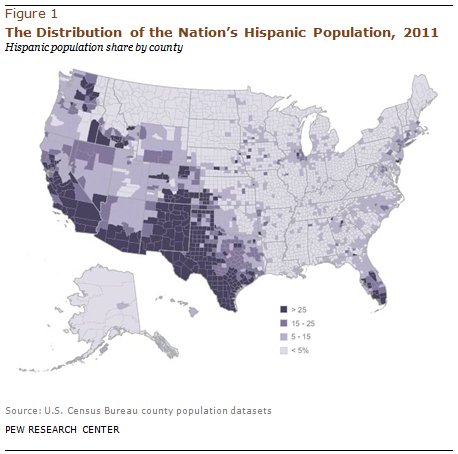
Millennials are labeled with some pretty negative traits, such as self-absorbed, wasteful, greedy, cynical… as well as, some more positive traits such as environmentally conscious and idealistic, but how are Hispanic millennials different?
According to the Hispanic Millennial Project, Hispanic millennials, unlike their parents, want to put themselves out there, stand out, get noticed. At the same time they want to keep close ties with their cultural heritage. Values such as family and language (Spanish-first), continue to be a common denominator inside Latino households. Paradoxically, Hispanic millennials want to fit in the mainstream and are prone to seek success through wealth. They are not seeking recognition as Latinos anymore. However, this may be because Hispanic millennials actively pursue opportunities to better themselves; they want to be professionals, entrepreneurs, doctors, public figures. Higher education is a main concern for them. Hispanic millennials see in a college degree the opportunity for “Real Success.” They want to be everything their parents are not.
The same study reveals that Hispanic millennials are more optimistic than their peers, that they want to be more happy with themselves and they are looking to make a difference in people’s lives… and they want to be wealthy; Hispanic millennials embody the meaning of the American Dream. Although they keep close to their cultural heritage, they have incorporated American values such as openness, achievement and success.
Hispanic Millennials’ Unique Characteristics
Living La Vida “Digitally” Loca
Hispanic millennials use of technology aligns with that of non-Hispanic millennials. 8 out of 10 young Hispanic millennials (ages 18-24) own a cellphone and are all about social media. According to The Life on Screens of the Hispanic Millennial, A Marketer’s Bedtime Story, young Hispanics are drawn to more visually social platforms such as Instagram and Snapchat, steering away from Facebook and Twitter. They resort to YouTube and Google+ to get news, and they prefer Android over iOS due to price accessibility.
Hispanic Millennials spend over 20 net hours a week with their smartphones. Hispanic millennials are also more likely to conduct mobile searches rather than resorting to a desktop search and are overall less intensive in their home desktop usage. As for other devices such as tablets, they take pictures, listen to music and watch streamed content on tablets 10% more than non-Hispanic millennials.
Get in their little screen: with 20 hours of net mobile usage, your brand wants to be on their phones by all means. Product endorsement by the people they admire (not necessarily other Hispanics) and content they can relate to is a good way get their attention. They navigate in both the American cultural identity as well as the Hispanic cultural identity, so there is plenty of room to be creative and reach them.
La Tele
Hispanic millennials watch 20% more TV than their peers, and they are more prone to watch live TV than non-Hispanic millennials. Young Hispanic millennials are more likely to spend over 40 hours a week watching a TV screen and they are less likely to chose Spanish spoken programming. Like the rest of the millennials, Hispanic millennials will be “browsing” websites while sitting through a show. Hispanic millennials are bicultural, therefore, it is not as significant for them, watching other Latinos on TV. Well -thought-out stories and content relatable to them is more likely to pique their interest than the diversity count.
Stereotypes, big no no: brands have tried to appeal to different segments humorously using stereotypes on ad campaigns -remember Burger King with their TV ad for the Texican Whopper? This campaign aired in Europe but it was controversial enough that the Mexican ambassador in Spain contacted Burger King’s Headquarters and the ad was eventually pulled from TV. It never aired in US. This ad showed several stereotypes as well as, the misuse of the Mexican flag- but no demographic group wants be put in a box, separated from the mainstream. According to the Pew Research Center, millennials are refusing to be labeled as millennials. Hispanic millennials don’t fit the general perception in the word Hispanic. Other bicultural Latinos have great acceptance among Hispanic millennials. Product endorsements by these personalities, like singer Pitbull endorsing Kodak, are very well received by Hispanic millennials.
Think family first: Hispanic millennials are likely to continue to live with their parents or to have a family of their own. Family is a huge axis for Latino life (if not “The” axis). Reflect on how your brand or product can serve the Hispanic household. Does your message align with the young Latino family? These are questions to ask before targeting Hispanics.
No le bajes a la Radio
According to Nielsen, Spanish radio listeners spend a great amount of time tuning in to the radion, much more than the rest of the population in the US; most of these are adults ages ranging between 18 to 49 who spend 13 hours and 12 minutes per week listening to their favorite radio stations.
But younger listeners are predominantly bicultural and are perfectly comfortable listening to music in English and Spanish, meaning they will not stay tuned in with the Spanish dominant radio station for too long. Hispanic millennials listeners respond very well to artists, musicians and performers who cross back and forth between cultural lines, just like they do. Young Hispanics identified themselves with personalities who share their same mixed cultural upbringing. Taking into consideration that music consumption can be tailored to the listener’s taste with apps such as Spotify plus 3 to 7 hours a week of tablet use, radio may hold the largest reach among Hispanics for too long.
Behave Latino, but speak English, be bicultural: Hispanic millennials navigate between two worlds, they can easily listen to Beyonce, Jay-Z and dance to the sound of Romeo’s bachata and Daddy Yankee’s reggaeton. Brands that can truly understand biculturalism will be much more likely to succeed with Hispanic Millennials. Hispanic millennials respond very well to personalities who go back and forth across cultural lines, just like they do.
Reading Las Noticias
Hispanic millennials, much like millennials from other backgrounds, prefer reading news content from their mobile devices. The Hispanic population consumes local and neighborhood news at a higher rate than the overall population. Hispanics across the country pick up newspapers that will source and talk about their community, their local interests and local news. Hispanic millennials are more prone to look for these outlets in a digital version; they are also perfectly comfortable switching back and forth between English and Spanish, yet English is most prefered.
Get digital, get bilingual: Ads, flyers and take-with-you promotional materials introducing your brand will serve you best if they are bilingual. Make your ads and content unique and relatable to Hispanic millennials.
“Just arrived” Foreign-born Hispanic millennials
US-born Hispanic-millennials are more likely to act like the rest of the non-Hispanic millennials in terms of digital use. The Latino Digital Divide report from the Pew Research shows that, Foreign born Hispanic-millennials are not as technologically savvy nor they are culturally less inclined toward digital living as the rest of their peers. English is also defining factor- bilingual US-born Latinos will access content in English preferably over Spanish (87% of English-dominant Latinos go online), foreign born Hispanics find less Spanish content available in US, therefore their internet usage is significantly lower in comparison with English-dominant Latinos (35% of Spanish-dominant Hispanics go online). These numbers tell us a story of assimilation. Within Hispanic millennials, differences in numbers arise as well, 80% of native Hispanic millennials use cell phone as opposed to 72% of foreign born Hispanic-millennials.
En tu barrio
According to the Pew Research Center, Millennials also self labeled as “idealistic”. Millennials consider themselves civic-minded, active participants in today’s world. They demand that companies and brands do their part in the issues they hold important. This is a generation that has grown up with very particular global social issues. Millennials have grown up with fear of terrorism, natural disasters and disparities caused by global economy. And due to the immediate news reach over the internet and social media broadcasting, millennials have acquired a global social conscience.
Millennials are redefining community beyond a location and more by mindset. There is no particular cause that will define or label their altruistic fiber, yet, according to a study performed by Cone Inc., they rally around causes that have global impact like education, poverty, health and the environment, and they do so within their own neighborhood. The study also says that Millennials seek out more volunteer opportunities to advance their professional career and will be happy working full time for companies that will allow paid volunteer hours in the nonprofit of their choice. In our experience at ZipSprout.com, we found that Hispanic millennials are not much different than their peers. They are drawn to their church, community centers, student unions or PTAs to volunteer.
Hispanic Millennials care about Latino issues, but their passion about these issues is quite different from their parents’. Being Latino doesn’t fully define them, therefore Latino issues are perceived as a community concern much more than a personal distress Their worries are as global as the rest of their peers and they will participate in social media activism as the rest of the millennials.
Help make the change: Millennials like brands who get involved in global societal issues. Millennials intrinsically believe they are making a difference through social media activism, through volunteerism and they are demanding brands to do the same. Appealing to their altruistic sense is a great marketing strategy. Hispanic millennials are active participants in their community and their schools. Their barrio continues to be the atmosphere where the world’s general scope converges with the specific needs in their blocks, their schools and their churches.
Wrapping it up “para llevar”
Consider the Hispanic Millennials market as a long term investment. Understanding their drives and the traits that distinguish them from non-Hispanic millennials is key. Hispanic millennials want to shine, but also they don’t want to be set apart from the others.
Make your campaign bilingual, bicultural and family oriented. Most Hispanic millennials either live at home with their parents or they have a family of their own. Brands that can convey their message across the Hispanic family will be more successful than the ones that don’t.
Show up first in their little screens. Optimize your campaign to be mobile friendly. Mobile search is here to stay. Social media and digital marketing are strategies that need to be consider for brand recognition and product placement among Hispanic millennials. Be there as often as possible, as Hispanic millennials are spending more 20 hours a week on their smartphones.
Stay socially engaged with Hispanic millennials by conducting purpose-marketing campaigns in the global issues concerning them. This can be done at a local scale. Reach out to their schools, their churches, their neighborhoods. Identify active members in their communities and get involved by sponsoring nonprofits or events that call their interest or where Hispanic millennials volunteer the most. Build brand loyalty and recognition, while doing good for the world. Millennials have a global social conscience, genuinely appeal to their concerns.
